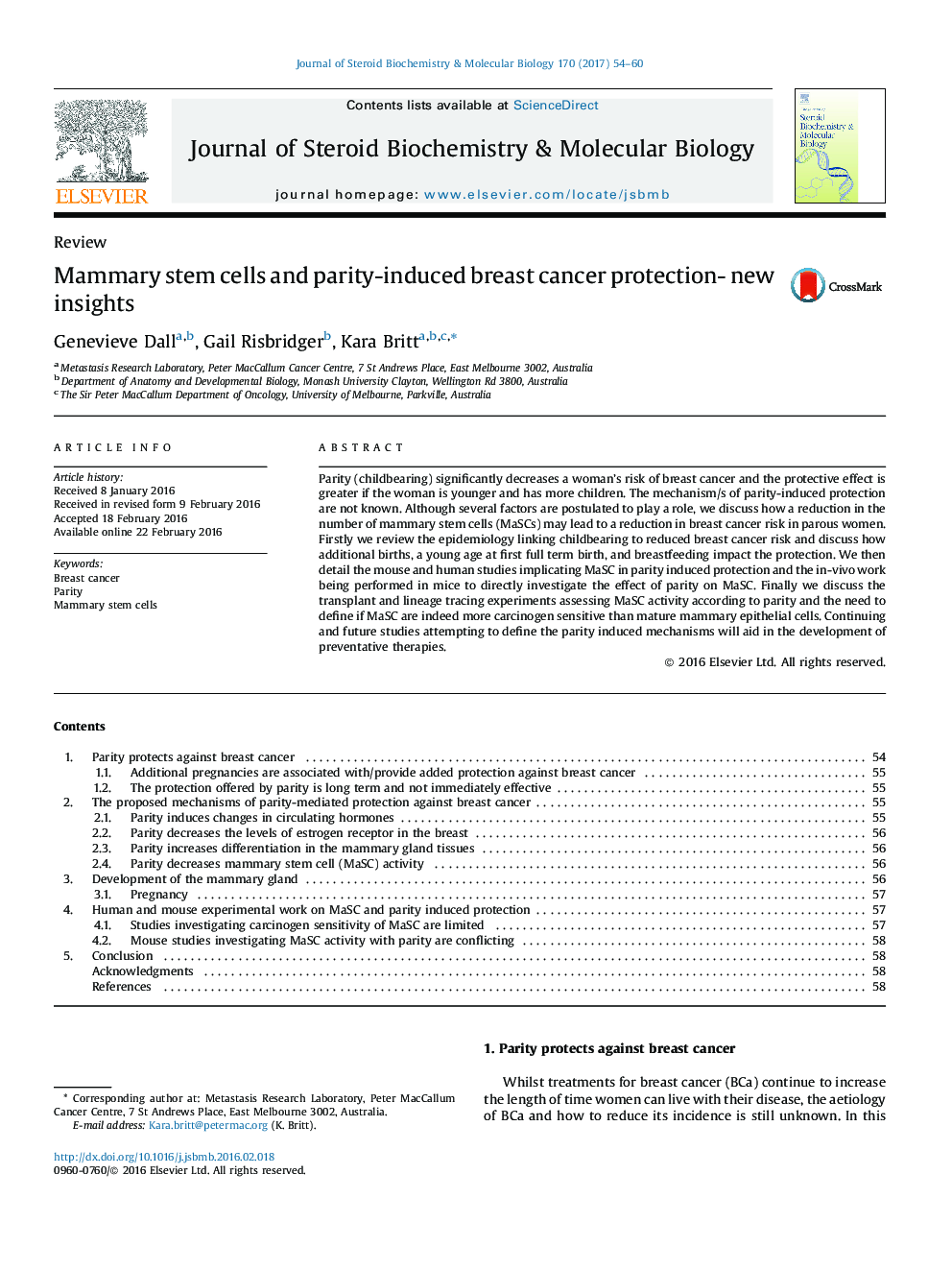| کد مقاله | کد نشریه | سال انتشار | مقاله انگلیسی | نسخه تمام متن |
|---|---|---|---|---|
| 5513067 | 1540977 | 2017 | 7 صفحه PDF | دانلود رایگان |

- Parity decreases breast cancer risk with younger pregnancies providing more protection.
- Mammary stem cells have been proposed to play a role in parity-induced protection.
- It is not clear whether mammary stem cells are the most carcinogen sensitive of breast cells.
- Mouse models are yet to definitely show that mammary stem cell activity is reduced by parity.
Parity (childbearing) significantly decreases a woman's risk of breast cancer and the protective effect is greater if the woman is younger and has more children. The mechanism/s of parity-induced protection are not known. Although several factors are postulated to play a role, we discuss how a reduction in the number of mammary stem cells (MaSCs) may lead to a reduction in breast cancer risk in parous women. Firstly we review the epidemiology linking childbearing to reduced breast cancer risk and discuss how additional births, a young age at first full term birth, and breastfeeding impact the protection. We then detail the mouse and human studies implicating MaSC in parity induced protection and the in-vivo work being performed in mice to directly investigate the effect of parity on MaSC. Finally we discuss the transplant and lineage tracing experiments assessing MaSC activity according to parity and the need to define if MaSC are indeed more carcinogen sensitive than mature mammary epithelial cells. Continuing and future studies attempting to define the parity induced mechanisms will aid in the development of preventative therapies.
Journal: The Journal of Steroid Biochemistry and Molecular Biology - Volume 170, June 2017, Pages 54-60